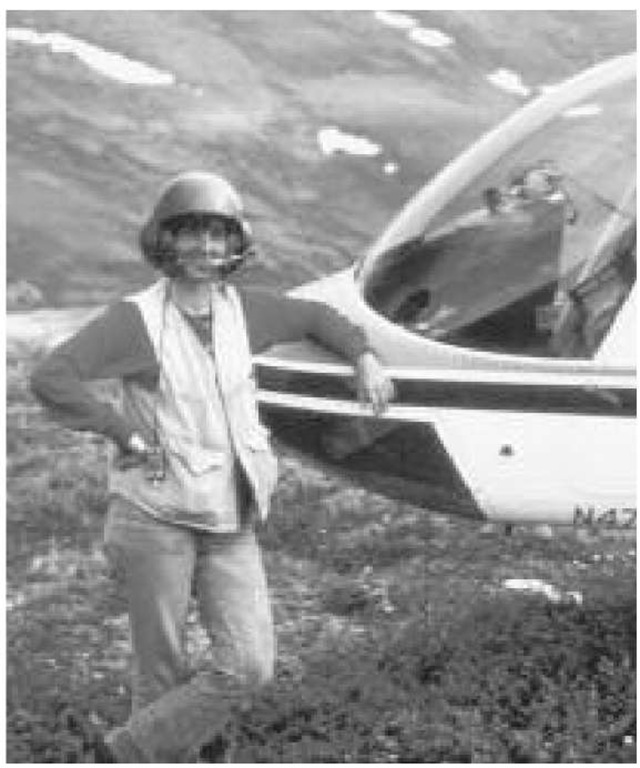(1941- ) American Sedimentologist
Geology is an interdisciplinary science that can be closely engaged in research with other scientific fields like biology, chemistry, physics, meteorology, and oceanography. Gail Ashley has not only collaborated on projects in these fields but also in archaeology and paleoanthropology. Her specialty is modern depositional systems, which impact and interact with modern human dwellings and communities. In fact, in some cases, it is these water sediment systems that attract the human communities. This is the idea of a geological-archaeological project with which she is associated. Ashley is studying a 7-to-8m-thick section of sediments in the Olduvai Gorge, Tanzania, Africa, to determine the type of environment that existed there approximately 2 million years ago when early hominids populated the area. She is studying the ecological link between freshwater springs and these early humans with the idea that springs are more reliable sources of water than rivers and lakes as described in the paper “Archaeological Sediments in Springs and Wetlands.” The work will also touch upon the paleoclimate of the region at that time. She and a team of archaeologists and anthropologists are making great new discoveries in the old stomping grounds of Louis and Mary Leakey, as well as the australopithicine named Zinjanthropus.
The Olduvai research may be Gail Ashley’s highest-profile project, but it is one of many of equal importance. She is an expert on glacial geo-morphology and glacial marine sedimentation. Her work has taken her to Antarctica, the Brooks Range in Alaska, and Ireland, as well as the northeastern United States. This research has the general theme of determining the effect of glacia-tion on the Earth but most of her research projects deal with the effect of sediment and water flow on glacial stability. Her travels to Antarctica mark a personal triumph, as well as a triumph for women scientists. Ashley was denied a research opportunity in 1970 because there were no facilities for women. Twenty years later, times had changed. Possibly as an offshoot of her glacial work, she also conducts research on marshes,rivers, and wetlands mainly in New Jersey and British Columbia, Canada. It is the glaciation that causes poor drainage and wetlands in most of the northeastern United States and other areas. Because wetlands are so environmentally sensitive, this research has also received much attention.
Some of Gail Ashley’s research requires her to be airlifted in by helicopter, especially that in Alaska
Gail Mowry was born on January 29, 1941, in Leominster, Massachusetts. She became interested in geology at age 14 when her next-door neighbor, a geology professor from Smith College, Marshall Schalk, introduced her to the field. She attended the University of Massachusetts at Amherst and earned a bachelor of science degree in geology in 1963. While raising a family, she returned to the University of Massachusetts and earned a master of science degree in 1972. She completed her doctoral degree at the University of British Columbia, Canada, in 1977 with a dissertation on modern sediment transport in a tidal river. She joined the faculty at Rutgers University, New Brunswick, New Jersey, in 1977 and is currently a full professor and director of the Quaternary Studies graduate program. Gail Ashley was married to Stuart Ashley for 22 years. They have two children. She is now married to Jeremy Delaney, a geochemist at Rutgers University.
Gail Ashley has produced six edited volumes, 50 professional journal and volume articles, and 21 technical reports and field guides. She served as editor for the Journal of Sedimentary Research from 1996 to 2000 (the first woman to hold the position) and associate editor for Geological Society of America Bulletin from 1989 to 1995 and for the Journal of Sedimentary Research from 1987 to 1990 and 1992 to 1995.
Ashley has also performed outstanding service to the professional societies in geology. She was the president of the Society of Economic and Petroleum Mineralogists (SEPM) from 1991 to 1992 and only the second-ever female president of the 15,600-member Geological Society of America from 1998-1999. She was the vice president of the International Association of Sedimentologists from 1998 to 2002 and the chairman of the Northeast Section of the Geological Society of America from 1991-1992. She has also been active in the Association of Women Geoscientists and other groups to integrate more women into the fields of science and math. Gail Ashley has taken this effort to a personal level where she is well known as an excellent mentor to her students.

